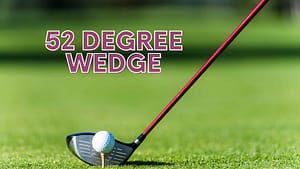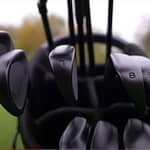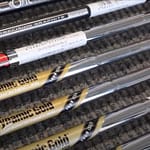
A 60 degree wedge is an essential club for you, especially when it comes to short game shots around the green. However, many golfers struggle with selecting the best bounce for 60 degree wedge.
The best bounce for 60 degree wedge is roughly 6-8 degrees, which is on the lower side before transitioning to a higher bounce.
Choosing the right bounce for a 60 degree wedge can make all the difference in terms of shot-making and consistency.
In this article, we’ll dive into the factors to consider when selecting 60 degree wedge bounce, explore what is the best bounce for a 60 degree wedge, and provide tips on how to hit this versatile club.
What Is The Best Bounce For 60 Degree Wedge?
A 60 degree wedge is considered a high-lofted wedge and is often used for short-pitch shots or bunker shots.
The bounce angle on a wedge can vary from low to high, and you must choose the right bounce angle based on your swing type and course conditions.
For a 60-degree wedge, the ideal bounce angle is around eight degrees.
This is because eight degrees of bounce is just at the lower end of the bounce angle with eight degrees of bounce, the leading edge of the club will be slightly off the ground, making it easier to make clean contact with the golf balls.
A bounce angle that is too high will cause the club to bounce off the turf, leading to thin shots or even shanks.
On the other hand, a low bounce 60 degree wedge will cause the leading edge of the club to dig into the ground, leading to fat shots.
In addition to the bounce angle, the sole grind on a wedge is another crucial factor to consider when looking for the best bounce for wedges. The sole grind refers to the shaping of the sole of the club and how it interacts with the turf.
A wedge with a wider sole and more bounce is ideal for fluffy sand or deep rough, while a wedge with a thinner sole and less bounce is better for firm turf or tight lies.
Factors To Consider Before Choosing The Best Bounce For Wedges
When it comes to knowing what is the best bounce for a 60 degree wedge, there are several factors that golfers should consider. :
Skill Level

If you are a beginner, a low bounce 60 degree wedge may be easier to use as it will prevent the club from digging into the ground.
On the other hand, more experienced golfers may prefer a higher bounce to achieve more versatile shot-making options.
Course Conditions
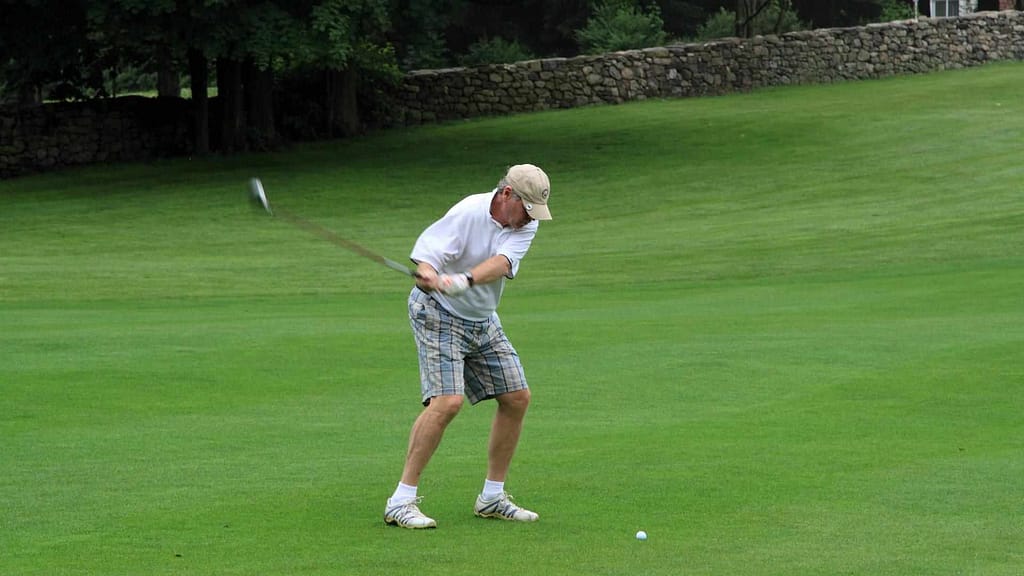
Soft, fluffy sand and thick roughs require more bounce to prevent the club from digging in too deep, while tight lies and hard-packed sand may require a low bounce 60 degree wedge for tight lies to promote clean contact.
It’s important to consider the typical conditions you’ll encounter on the courses you play most often to choose the correct bounce for wedges and a few of them are given below.
| Course Condition | Bounce | |
| 1. | HARD PAN BUNKERS | Low Bounce |
| 2. | TIGHT FAIRWAY LIES | Low Bounce |
| 3. | SOFT AND FLUFFY BUNKERS | High Bounce |
| 4. | THICK GRASS | High Bounce |
Wedges with more bounce are better suited for softer turf conditions, while wedges with less bounce are better suited for firmer conditions.
More bounce allows the club to slide along the turf, preventing it from digging too deep and reducing the chances of hitting fat shots.
Less bounce, on the other hand, allows the club to cut through the turf more easily, providing better control and accuracy on tight lies.
Swing Style
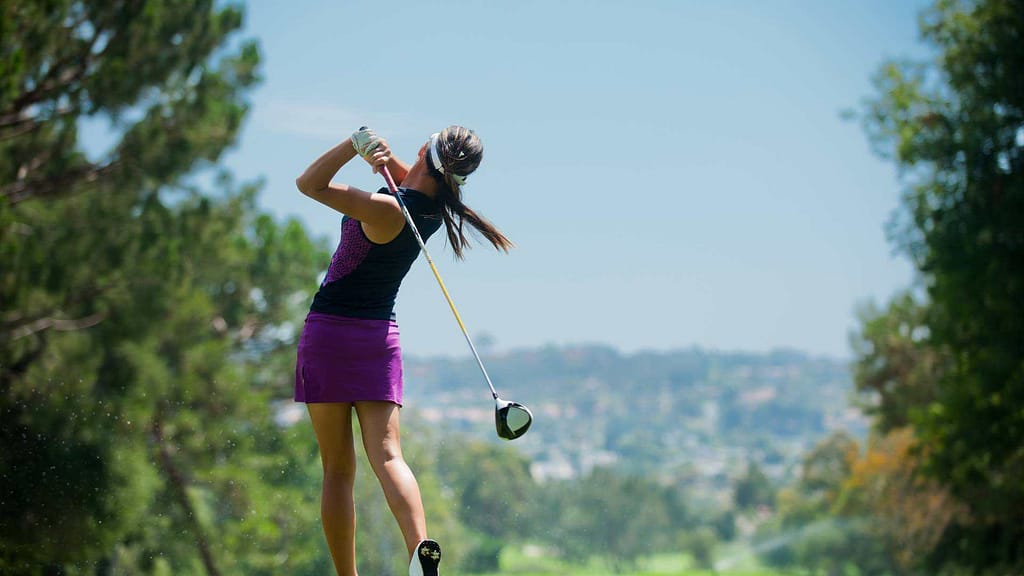
Golfers with a steep angle of attack tend to do better with a high bounce wedge, while golfers with a shallow angle of attack may prefer a low bounce wedge.
A too much bounce on the wedge has more material on the sole, which can help prevent digging into the turf, while a low-bounce wedge has less material on the sole, which can help with crisp contact on tight lies.
TYPES OF SHOTS WITH A 60 DEGREE WEDGE
The idea of what bounce to get on wedges can vary depending on the type of shot you’re trying to hit. For example, a chip shot from tight lies may require a low bounce wedge to help prevent the club from digging into the turf, while a pitch shot from fluffy sand may require a higher bounce wedge to prevent the club from getting stuck.
Here’s an ideal overview of what bounce should you get on your wedges for different types of shots:
- Chip Shots: Low bounce (4-6 degrees)
- Pitch Shots: Mid to high bounce (8-12 degrees)
- Bunker Shots: High bounce (12-14 degrees)
Chip Shots
For chip shots, a low bounce 60 degree wedge with a bounce angle of 4-6 degrees is recommended. This type of wedge will help you hit clean shots with less risk of digging into the turf.
Pitch Shots
When it comes to pitching shots, a moderate bounce wedge with a bounce angle of 8-10 degrees is ideal. This type of wedge will allow you to make clean contact with the ball and avoid digging too much into the turf.
Bunker Shots
For bunker shots, a high bounce wedge with a bounce angle of 12-14 degrees is recommended. This type of wedge with 12 degree bounce will help you get the ball out of the sand with ease and avoid getting stuck in the bunker.
Also, consider the type of grind on your wedge when selecting the bounce angle.
A wedge with a wide sole and low bounce angle may work well for a golfer who tends to hit the ball with a steep angle of attack, while a wedge with a narrow sole and high bounce angle may work better for a golfer with a shallower angle of attack.
HOW DOES BOUNCE IMPACT MY WEDGE SHOTS?
Wedge bounce determines how the club interacts with the turf and the ball. The amount of bounce on a wedge can affect how the club performs on different types of shots and lies.
The bounce of a 60 degree wedge can have a significant impact on your game. Too much bounce can cause the club to bounce off the ground and lead to inconsistent shots, while too little bounce can cause the club to dig in and lead to fat or thin shots.
It’s important to find the right bounce for your swing and the course conditions you typically encounter to maximize your performance on the course.
By choosing the best 60 degree wedge bounce, you can improve your consistency and confidence around the greens and can know how to hit a 60 degree wedge in a better way.
Top 5 Picks for the Best Bounce for a 60 Degree Wedge
Now that you understand the importance of wedge bounce and how to choose the right one for your 60 degree wedge, let’s take a look at some of the top picks for the best bounce on the market.
Titleist Vokey SM8 Wedge

The Titleist Vokey SM8 Wedge is a popular choice among professional golfers and amateurs for being the best wedge bounce for tight lies.
With six different bounce options, ranging from 4 to 14 degrees, you can choose the best bounce for your game.
The high-bounce options are great for softer turf and sand, while the low-bounce options work well on firmer conditions.
Callaway Mack Daddy 5 Jaws Wedge

The Callaway Mack Daddy 5 Jaws Wedge is another top pick for golfers looking for the best bounce for their 60 degree wedge. It has four different bounce options, ranging from 8 to 12 degrees.
The C-Grind sole on this wedge is particularly effective for shots from tight lies, and the 12 degree bounce option is great for bunker shots.
Cleveland RTX ZipCore Wedge

The Cleveland RTX ZipCore Wedge is a popular choice for golfers who want a wedge with maximum spin and control. It has five different bounce options, ranging from 6 to 14 degrees.
The mid and low-bounce options are particularly effective for golfers who tend to take shallow divots, while the high-bounce options are great for softer turf and sand.
TaylorMade Hi-Toe Big Foot Wedge

The TaylorMade Hi-Toe Big Foot Wedge is designed for golfers who want a wedge with maximum versatility. It has a high bounce angle of 15 degrees, making it ideal for soft turf and sand.
The Big Foot sole design also helps to prevent digging, making it a great option for golfers who tend to hit behind the ball.
Mizuno T20 Wedge

The Mizuno T20 Wedge is another great option for golfers who want maximum spin and control in the best low bounce wedges.
It has four different bounce options, ranging from 6 to 14 degrees. The low-bounce options in mizuno wedges are great for firmer turf conditions, while the high-bounce options are better for softer turf and sand.
FAQS: 60 Degree Wedge Bounce
What is the standard bounce for a 60 degree wedge?
The standard and best bounce for 60 degree wedge are usually around 8-12 degrees. Bounce refers to the angle between the leading edge of the clubface and the sole, and it helps to prevent the club from digging into the ground, especially in softer turf conditions.
What is low bounce on 60 degree wedge?
Low bounce on a 60 degree wedge typically refers to a bounce angle of 4-6 degrees. This type of wedge is considered the best bounce for 60 degree wedge for players who have a steep angle of attack and tend to take divots, as it helps to prevent the club from digging too deep into the ground.
Is 14 degree bounce too much?
14 degrees of bounce is considered a high bounce angle, and it may not be considered as the best bounce for 60 degree wedge for all players. It can be useful for players who tend to play in soft conditions or for players with a shallow angle of attack. However, it can also lead to the club bouncing off the ground and hitting thin shots if the player has a steep angle of attack.
How hard is it to hit a 60 degree wedge?
Hitting a 60 degree wedge can be challenging for some players, as it requires precise contact and a good understanding of how to use the best bounce for 60 degree wedge. It is a high-lofted club that can be useful for shots around the green, but it requires practice and skill to use effectively.

